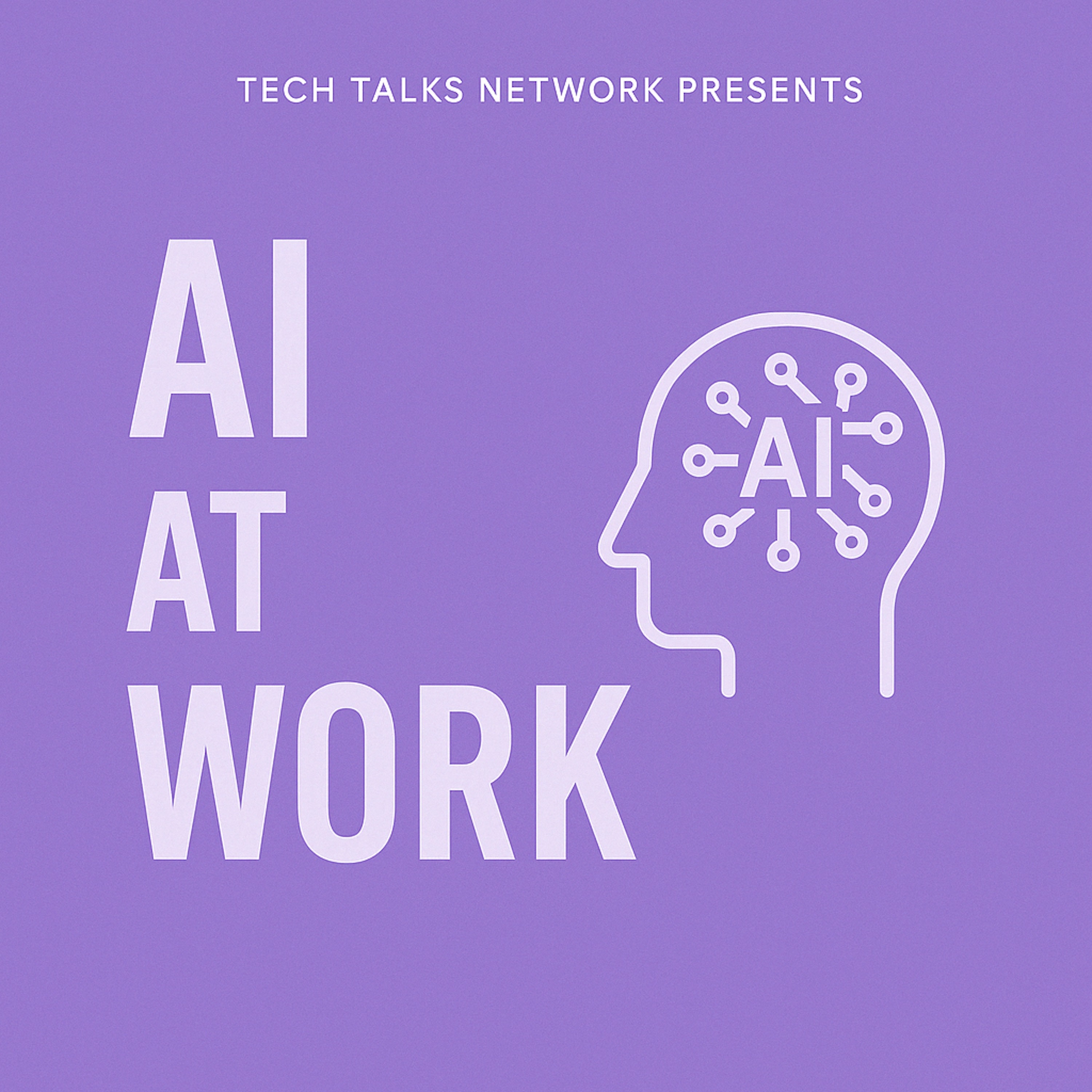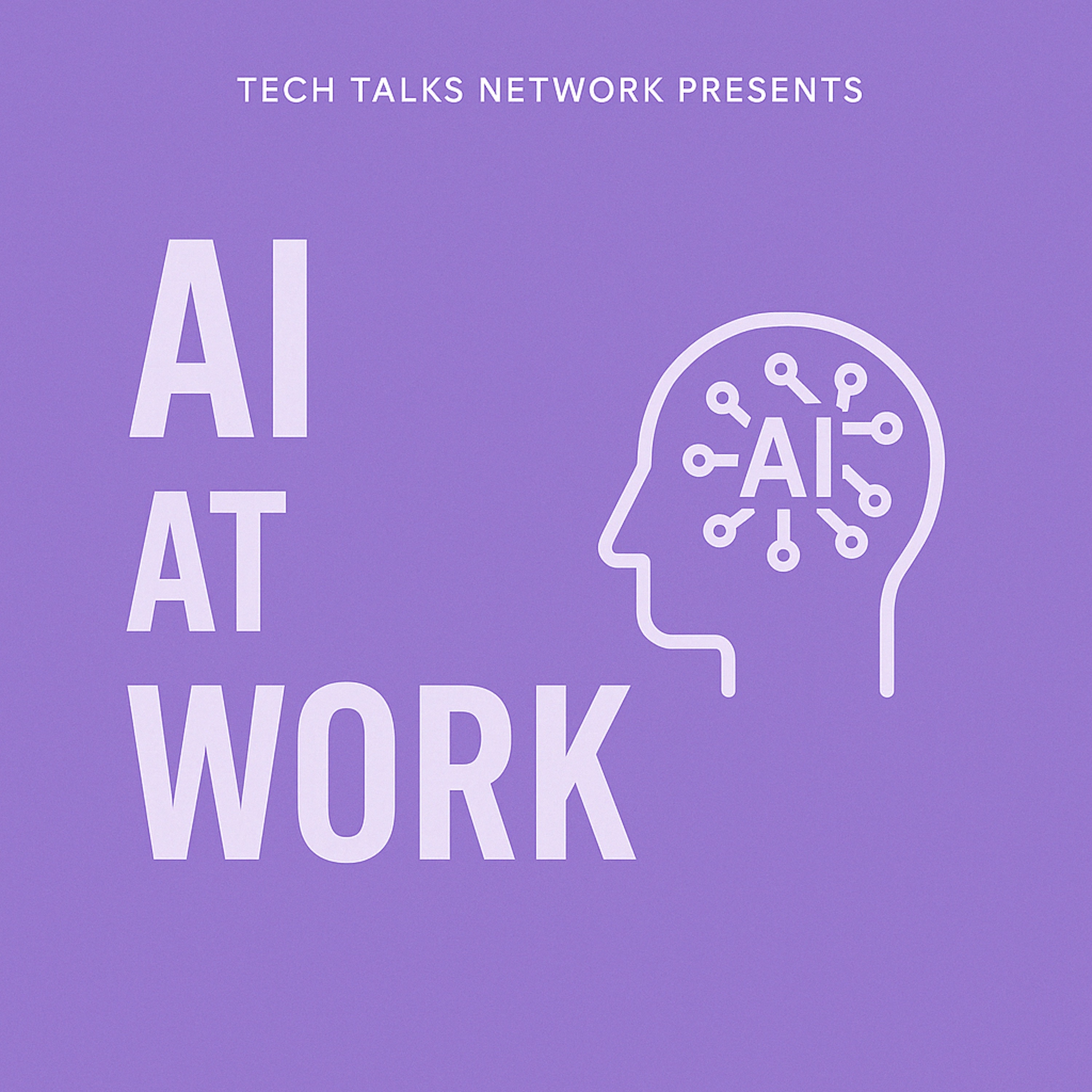AI at Work
Podcast Description
What does AI really mean for the modern workplace, and are we ready for what comes next?AI at Work is a podcast from the Tech Talks Network, the home of conversations that showcase the voices at the heart of enterprise technology. You may know me from Tech Talks Daily, where we explore a different area of innovation in every episode. This show takes a focused look at one of the biggest shifts in business: how artificial intelligence is transforming the way we work.Each episode brings insights from business and technology leaders who are already using AI to increase productivity, improve decision-making, and rethink the role of people inside the enterprise. We look at real-world use cases, explore the return on investment of AI tools, and confront some of the hard questions around implementation, governance, ethics, and the evolving relationship between humans and machines.From intelligent automation to agentic AI, and from the promise of workplace efficiency to the risks of unintended consequences, we aim to offer a grounded and accessible view of how AI is shaping the future of work.If you’re using AI in your business or thinking about how to get started, this podcast is your chance to learn from the people already doing it.
Podcast Insights
Content Themes
The podcast explores a variety of central themes, including the implications of AI on productivity, decision-making, and human roles in enterprises. Specific episodes delve into topics such as mass-scale code refactoring, represented by the interview with Justine Gehring from Moderne, as well as practical AI integration strategies depicted in the debut episode featuring Gautam Singh discussing data analytics. The show aims to demystify AI by addressing governance, ethics, and challenges faced by businesses in its adoption.

What does AI really mean for the modern workplace, and are we ready for what comes next?
AI at Work is a podcast from the Tech Talks Network, the home of conversations that showcase the voices at the heart of enterprise technology. You may know me from Tech Talks Daily, where we explore a different area of innovation in every episode. This show offers a focused look at one of the most significant shifts in business: how artificial intelligence is transforming the way we work..
AI at Work is a podcast from the Tech Talks Network, the home of conversations that showcase the voices at the heart of enterprise technology. You may know me from Tech Talks Daily, where we explore a different area of innovation in every episode. This show takes a focused look at one of the biggest shifts in business: how artificial intelligence is transforming the way we work.
From intelligent automation to agentic AI and from the promise of workplace efficiency to the risks of unintended consequences, we aim to provide a grounded and accessible perspective on how AI is shaping the future of work.
If you’re using AI in your business or thinking about how to get started, this podcast is your chance to learn from the people already doing it.
What happens when holiday shopping habits shift faster than most small businesses can keep up, and AI becomes the first stop for gift ideas, local searches, and product discovery? In my conversation with Alicia Pringle, Senior Director of Online Marketing at Network Solutions, we look at how the rise of AI-assisted search is changing the game for small business visibility during the busiest season of the year. Alicia brings two decades of marketing experience and a front row seat to the rapid evolution of search, and she breaks down what is really happening behind the scenes as shoppers move from typing into Google to asking Gemini, ChatGPT, and other assistants for personal recommendations.
Alicia explains how early holiday behaviour has become and why the traditional mid-December surge is now simply a final sweep rather than the main event. She talks through the surge in AI driven discovery and how more than a third of shoppers now ask AI for curated suggestions with specific personal details baked in. This has created a rare moment where small businesses can compete with large retailers again because AI search rewards clarity, genuine content, and trustworthy online signals rather than the size of a marketing budget. Her examples make it clear that websites, local listings, and social channels now act as one connected reputation system, and AI will only surface businesses that look consistent, human, and helpful across all of them.
Throughout our conversation, Alicia brings the ideas to life with practical stories. She shares how a retreat centre in Arizona used smarter positioning, thoughtful content, and simple updates to pull in hundreds of organic clicks right as shoppers were searching for meaningful holiday gifts. She explains how small changes to website speed, photos, clarity, and mobile performance can lift a business in both traditional search and AI powered assistants, often in a matter of hours rather than months. And she makes a strong case for curiosity as the new essential skill, because leaders do not need to understand the mechanics of AI to benefit from it, they simply need to be willing to experiment.
As AI search becomes part of everyday life, Alicia’s message is grounding. Visibility can be earned again. Small businesses can adapt. Modern tools can remove a lot of the technical pain. And with a few thoughtful changes, brands can still show up in those key digital moments when customers are ready to buy. So how should small businesses use this moment to build trust, stay discoverable, and meet shoppers where they already are? I would love to hear your thoughts.

Disclaimer
This podcast’s information is provided for general reference and was obtained from publicly accessible sources. The Podcast Collaborative neither produces nor verifies the content, accuracy, or suitability of this podcast. Views and opinions belong solely to the podcast creators and guests.
For a complete disclaimer, please see our Full Disclaimer on the archive page. The Podcast Collaborative bears no responsibility for the podcast’s themes, language, or overall content. Listener discretion is advised. Read our Terms of Use and Privacy Policy for more details.